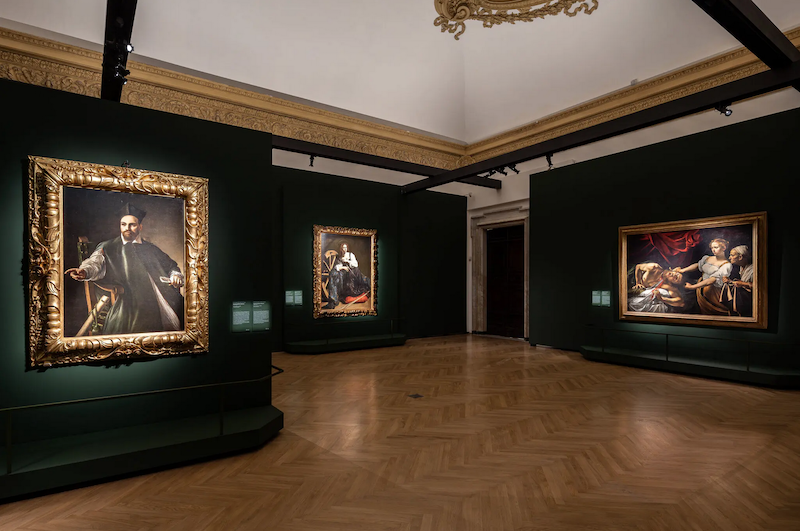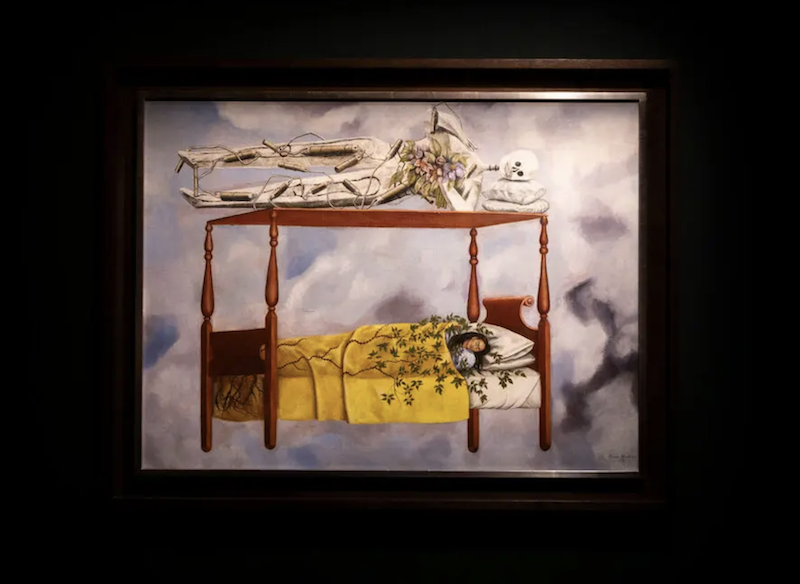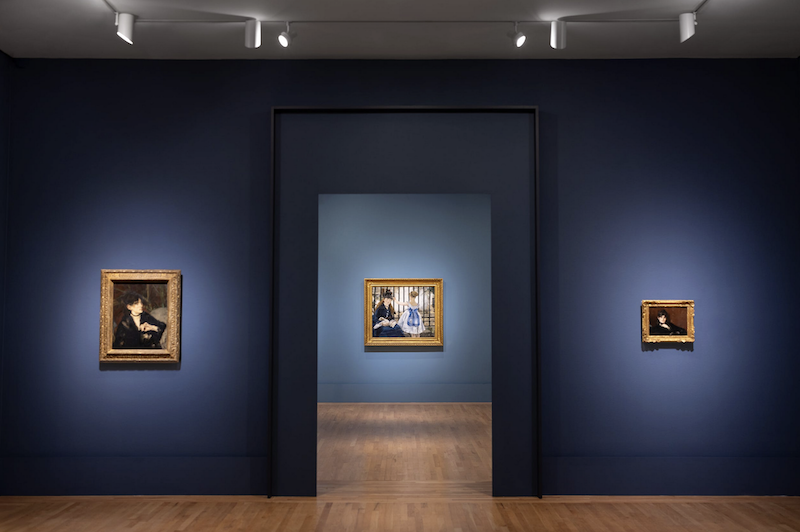
The Italian painter Caravaggio (1571-1610) lived in the era of the decline of many stars after the Renaissance. He pioneered naturalism on the basis of inheriting the humanistic spirit of the Renaissance and had an important influence on Baroque art.
The Paper has learned that recently, the special exhibition "Caravaggio 2025" was held at Palazzo Barberini of the National Gallery of Ancient Art in Rome. More than 20 works of Caravaggio from museums and private collections around the world were brought together here, telling the story of Caravaggio's artistic career in chronological order. Many of the works were reunited for the first time in centuries.
The Lombard artist Michelangelo Merisi, also known as Caravaggio, conquered Rome with his bold yet intimate style and won over powerful patrons. Now, 430 years later, Caravaggio is once again in the spotlight in the halls of the Palazzo Barberini.

The exhibition "Caravaggio 2025" at Palazzo Barberini in Rome tells the story of the artist's career
The exhibition, “Caravaggio 2025,” is arranged chronologically, tracing Caravaggio’s meteoric career, from his arrival in Rome with only himself as a model, to his wooing by wealthy bankers and cardinals, to his escape after a murder, and his final attempt to gain a pardon from the Pope through his art.
At the age of 13, Caravaggio became the apprentice of the oil painting master Titian and began to learn painting. At the age of 20, he came to Rome alone to make a living. He was active in Rome, Naples and other places from 1593 to 1610. His parents died when he was young, and he had no place to live. He was infected with the bad habits of gangsters. At first, he was poor and had no food or clothing. He barely made a living by working as a gunman for famous painters. He spent all day with gamblers, thieves, prostitutes, beggars and other street people. In his eyes, it seemed that those gray, leaning, and incomplete things were more touching.

Caravaggio Self-Portrait
Thomas Clement Salomon, director of the National Gallery of Ancient Art in Rome, said the National Gallery has the most important collection of Caravaggio paintings in the world and is the perfect place to host the Caravaggio event.
In the exhibition hall, three works by Caravaggio: The Cardsharps from the Kimbell Art Museum in Fort Worth, The Musicians from the Metropolitan Museum of Art in New York, and St. Catherine of Alexandria from the Thyssen-Bornemisza National Museum in Madrid. After hundreds of years, the three works have returned to the Palazzo Barberini. Cardinal Antonio Barberini was one of the old residents of this 17th-century palace and once owned the three works.

Caravaggio, The Card Cheater, on loan from the Kimbell Art Museum in Fort Worth
The exhibition sold more than 60,000 tickets soon after its opening, a testament to both Caravaggio's artistic appeal and his reputation as the "bad boy" of the Baroque. Of the 24 works on display, nine are from overseas (five from the United States). In an interview with the media, Salomon said that the exhibition has some American elements.
This time, museums in the United States provided important collections, including St. Francis in Ecstasy from the Wedsworth Museum in Hartford, Connecticut, Martha and Mary Magdalene from the Detroit Institute of Arts, and St. John the Baptist from the Nelson-Atkins Museum in Kansas City, which also enabled curators to bring together three of Caravaggio’s four known paintings of the St. John.

Caravaggio, Saint John the Baptist, on loan from the Nelson-Atkins Museum of Art, Kansas City
These works make for some interesting juxtapositions. Caravaggio was famous for using people he knew as models, often from the lower classes of society, including courtesans such as Fillide Melandroni of Siena, who was well-known in Rome at the time. Melandroni has also been identified by scholars as the model for St. Catherine of Alexandria, now in Madrid, the woman holding a mirror in Martha and Mary Magdalene, in Detroit, and the title character in Judith Beheading Holofernes, in the Palazzo Barberini. Now, these works are on display together.

Caravaggio's Saint Catherine of Alexandria, on loan from the Thyssen-Bornemisza National Museum in Madrid

Caravaggio, Martha and Mary Magdalene, on loan from the Detroit Institute of Arts
“To me, it shows how Caravaggio worked like a director,” said curator Maria Cristina Terzaghi. “That’s very exciting." Bringing so many of Caravaggio’s works together under one roof should allow scholars to resolve several outstanding questions, she said. Some are technical, like the dating of some of the works, but others are thornier, as scholars disagree over the attribution of works. Two works, Narcissus and Portrait of Maffeo Barberini as Protonotary Apostolic, are in question, and showing and comparing them with recognized Caravaggio works may help determine whether they can be attributed to the artist.

A Caravaggio painting, "Portrait of Maffeo Barberini," was unveiled last year.
In addition, the exhibition also includes two paintings that have recently emerged from private collections. One of them was made public last year, and the other is a portrait of Maffeo Barberini. It is said that the National Gallery in Rome is negotiating the purchase. Salomon said: "This is a hypothesis. The appearance of this painting together with a "Portrait of a Knight of Malta" highlights the gap in Caravaggio's research on portraits." Archival materials show that Caravaggio painted many portraits, but few works were left. Francesca Cappelletti, director of the Borghese Gallery in Rome and another curator of this exhibition, said: "This is also why it is difficult to determine in his works."
Another work is Ecce Homo, which appeared at the Madrid auction in 2021. The suggested starting price for this painting was set at €1,500, but the Spanish government withdrew the painting after several Italian dealers and art historians initially identified it as a work by Caravaggio. After restoration, the painting was bought by an anonymous client and loaned to the Prado Museum in Madrid, which sent it to Rome for a special exhibition. Since the painting was made public, its ownership does not seem to have changed, but this exhibition will allow scholars to appreciate it in the context of other works on display.

Caravaggio's Christ Crowned with Thorns appears at the Madrid auction in 2021
"It's a very scientific exhibition, very suitable for scholars," Capelletti said. Other issues such as attribution, copies and provenance are discussed in the exhibition catalogue, which is a compilation of recent scholarship on Caravaggio. "The exhibition aims to summarize what we know today about the master and what we think of him today," said Terzaghi. Scholars agree that there are about 60 paintings that can be definitively attributed to Caravaggio, she said, and a little more than a third of these works are included in the exhibition. In addition, several other Caravaggio works can be seen in museums and churches in Rome. "If we count all these works, I would say that two-thirds of Caravaggio's works are now in Rome. So if you want to study Caravaggio, you have to come here during this period."

Caravaggio's The Concert, on loan from the Metropolitan Museum of Art, New York
The Borghese Gallery in Rome has loaned three works, while the Doria Pamphilj Gallery in Rome has loaned two.
Four churches in Rome have altarpieces by Caravaggio, though one of them hangs a copy rather than the original, which is now in the Vatican Museum. In the Church of San Luigi in France, there are three altarpieces created for the Contarelli Chapel, Caravaggio's first major religious work, which made him the talk of the city.
Caravaggio's second religious commission was to paint two side paintings for the Celasi Chapel in Santa Maria del Popolo. The original versions, both from 1604-1605, were the Crucifixion of Peter and the Conversion of Saul, but they were rejected because they were painted when the church was under construction and did not fit the space. He therefore repainted the two themes. The Crucifixion was later lost, but the first version of the Conversion, which belongs to a private collection in Rome, is on display in the Palazzo Barberini exhibition.
The exhibition organizers did not ask any church to lend the paintings because 2025 is the Jubilee Year, a holy year for the Roman Catholic Church that occurs every 25 years, and millions of believers are expected to visit Rome and the Vatican this year.

Caravaggio's The Martyrdom of Saint Úrsula
At the end of March, visitors can also purchase weekend tickets to the nearby Villa Ludovisi Casino to see Caravaggio's only known fresco, Jupiter, Neptune and Pluto. In addition to this fresco, which Caravaggio painted in 1597 for the villa's first owner, Cardinal Francesco Maria Del Monte, the villa's ceilings are frescoed by other Baroque masters, including Giovanni Francesco Barbieri, better known as Guercino. Guercino's fresco, Aurora, is located in the reception hall.
Salomon said: "Although it is not easy to hold this exhibition, we are most happy that we can hold it at this time."
The exhibition will run until July 6th.

